Top image: View of the moat, barbed wire and one of the guard towers of the concentration camp at Dachau, 1945. US Army Signal Corps Photo, Gift of the United States Holocaust Memorial Museum, from the Collection of The National WWII Museum, 2009.373.065.
In June 2004, while spending a weekend in Munich away from dissertation research at the Austrian National Library, I boarded a train in the city’s Hauptbahnhof (Central Station) for a short trip. Accompanying me was my friend, Haitham Ibrahim, a scholar in the field of comparative literature. Our destination—the Dachau concentration camp—was close, shockingly close.
On the way, we talked a bit nervously about what we would see. The day before, Haitham and I stopped by Munich’s Ludwig-Maximilian University to look at the commemorative plaque for Sophie and Hans Scholl, the immensely courageous and tragic figures of the White Rose resistance group, who had been arrested there in February 1943 after leaving anti-Nazi leaflets for students. Now we headed to Dachau, the genesis of the National Socialist concentration-camp system. Just eleven miles or so north of Munich, the site of the camp is not in some remote region, concealed from curious eyes. No, it stands adjacent to the town whose name it bears.
After disembarking from the train, we passed through the entrance gate bearing the wretched, specious slogan Arbeit Macht Frei (Work Makes You Free), later replicated at Auschwitz (where it attained even greater infamy). Despite knowing what to expect, our tour of Dachau over the next few hours bombarded us with horrors. There in front of us were the barbed wire and guard towers, the perpetual symbols of Nazi carcerality, and the area where the surrounding moat had been. We walked, too, where the prisoners were once barracked. Haitham and I also saw the ghastly “whipping horse” utilized for corporal punishment. The gas chamber and crematorium reminded us that this was not only a place of incarceration, it was a site of mass murder. Of the more than 200,000 human beings held in this camp, more than 41,000 died.
Before we departed, we walked by some of the powerful memorials at Dachau: Fritz Koelle’s statue “to the unknown concentration-camp inmate,” the unforgettable bronze image depicting contorted human arms and legs forming something like barbed wire, and the Jewish memorial building designed by Hermann Guttmann. I barely remember anything of the train ride back into Munich, just the feeling that what I had seen exceeded my understanding.
Educational materials at the camp reinforced so much of what the scholarly literature has long said—that Dachau was the “model” concentration camp. But what does it even mean to say “model” camp? In what ways did Dachau establish a standard for the massive SS-run network of concentration camps?
Konzentrationslager (Concentration Camp) Dachau was indeed the inception point for what David Rousset, a survivor of Buchenwald, later named the “concentrationary universe.” In operation from March 1933 to April 1945, it lasted almost as long as the Third Reich existed. The camp’s proximity to Munich, the Bavarian capital, dubbed by Nazis the Hauptstadt der Bewegung (Capital of the Movement), only underscores Dachau’s centrality to the history of National Socialism.
To be sure, Dachau was not the world’s first concentration camp. Neither Adolf Hitler nor Joseph Stalin invented this institution synonymous with barbarism. Andrea Pitzer’s 2017 One Long Night reflects on the significance of the 1890s and the context of colonialism for grasping the emergence of this scourge for humanity. The Spanish in Cuba, the British during the Boer War in South Africa, and the United States in the Philippines introduced this practice of isolating enemies from the larger civilian population and “concentrating” them outside of the familiar framework of jails and prisons. It is perhaps better to say that the Nazis, who were not unaware of their predecessors in this realm, perfected the concentration camp. As Nikolaus Wachsmann demonstrates, they did so with pride and openness, at least in the early years of the Hitler regime, justifying concentration camps as necessary for the “protection” of German society from internal threats.
In mid-March 1933, shortly after the Nazis took over government in Bavaria, Heinrich Himmler, leader of the SS and head of police in Munich, investigated whether the site of an old munitions factory in Dachau could be modified to house the rapidly expanding number of political prisoners, most of them Social Democrats and Communists, arrested by the Nazis after the Reichstag Fire a few weeks earlier. These men, taken into “protective custody,” were Dachau’s first prisoners. At the beginning regular police guarded the inmates until Himmler replaced them with his own SS personnel.
Initially, Hilmar Wäckerle, one of Himmler’s longtime associates, ran the camp. In the spring of 1933, several prisoners were murdered on his watch. With the camp drawing much unwelcome scrutiny, Himmler removed Wäckerle and designated Theodor Eicke as the new commandant. Harold Marcuse, one of the leading scholars on the long history of the Dachau camp, gives this apposite description of Eicke, the one-time army paymaster:
“The 40-year-old Eicke had been a pioneering SS leader, organizing new formations of SS troops in the region near Heidelberg. By November 1931 he had become a battalion leader commanding more than 1,000 men. Himmler knew that Eicke was a fanatically dedicated Nazi and a gifted organizer, as well as a stubborn, ruthless, and brutal man.”
As commandant of Dachau in 1933-34, Eicke was relentless in both the indoctrination of his men and the demonization of inmates. The latter he always denounced as “enemies of the state.” In October 1933, he codified the guidelines for his men to follow, called “Maintenance of Discipline and Order.” Investing supreme authority to decide and dispense punishments in the camp commandant, Eicke prescribed a range of carefully regimented and administered measures, including temporary loss of mail privileges, hard labor, binding prisoners to stakes or trees (for how long varied), and ordering special, exhausting exercises. Solitary confinement, with only bread and water granted, he encouraged. Corporal punishment, whether with a whip or with the punch, slap, or kick, was ingrained into the hellish existence inmates endured during their time in Dachau.
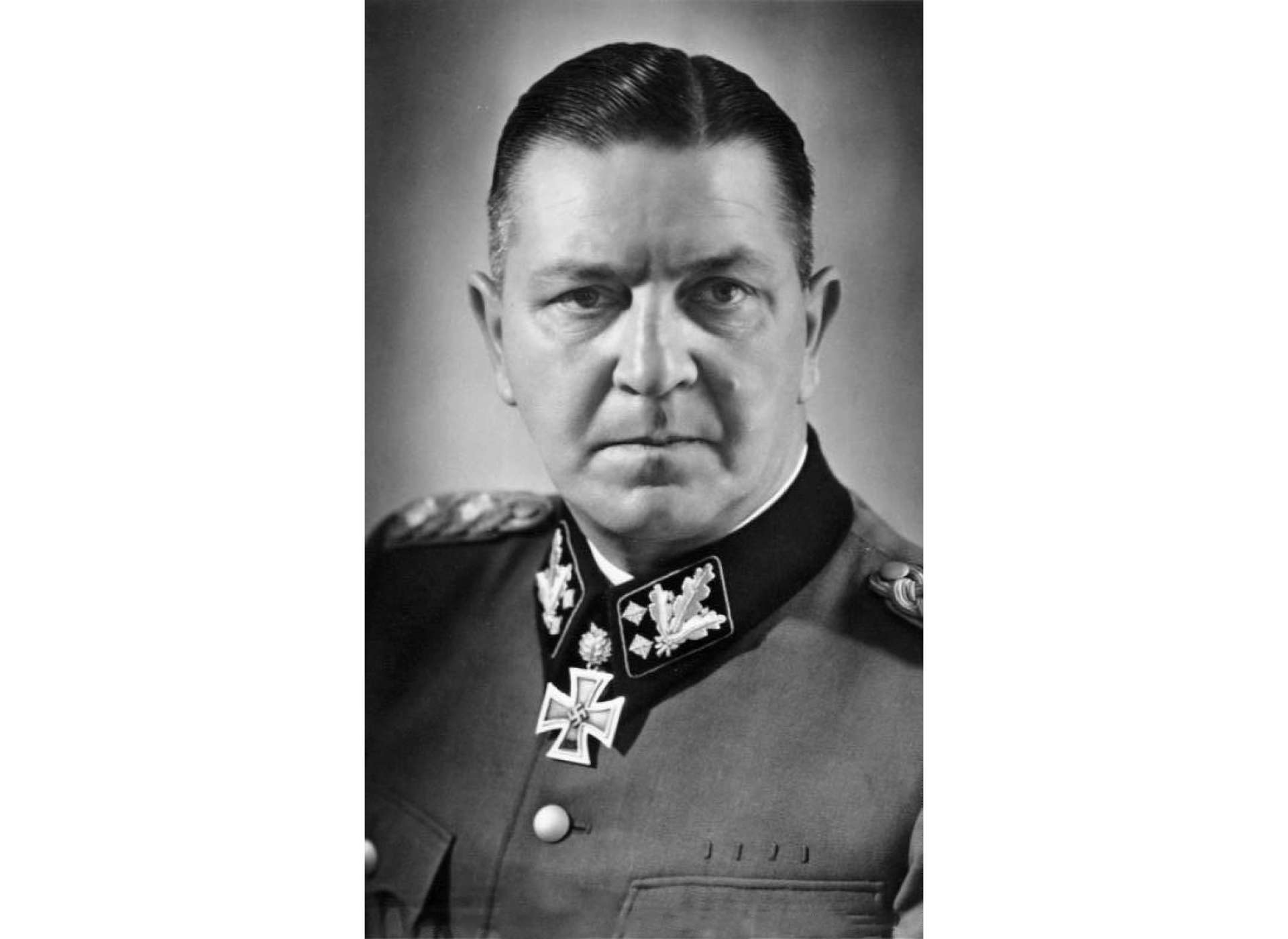
Theodor Eicke, 1942. Credit: Bundesarchiv_Bild_146-1974-160-13A. Courtesy of Wikimedia Commons.
Charles Sydnor, Jr., whose Soldiers of Destruction, still repays close reading, delineated the actions which Eicke punished with death: “political agitation, the spreading of propaganda, any acts of sabotage or mutiny, attempted escape or aid in an escape, attacking a sentry or guard tower.” Jewish prisoners, of course, suffered the most degrading treatment and Eicke and his subordinates subjected them and the entire camp population (around 2,000 in the fall of 1933) to incessant antisemitic tirades. What must be stressed here is that Eicke insisted on rotating who bore responsibility for meting out punishment in the camp. No one evaded participation in the brutality.
Rudolf Höss, later commandant of Auschwitz-Birkenau, learned much under the tutelage of Eicke at Dachau. Facing trial and likely execution in Poland for his crimes during World War II, Höss recounted a flogging he beheld in Dachau. It was Eicke’s order, Höss remembered, that at least one company of SS personnel be there when the punishment was carried out:
Two prisoners had stolen cigarettes from the canteen and were sentenced to twenty-five blows of the cane. The soldiers lined up in a U-shaped formation with their weapons. The punishment bench stood in the middle. The two prisoners were presented by the block leaders. The Kommandant put in his appearance. The camp commander and the senior company reported to him. The duty officer read the sentence and the first prisoner, a small, hardened, lazy man, had to lie down across the bench. Two soldiers from the troop held his head and hands firmly while two block leaders carried out the sentence, alternating after each blow. The prisoner didn’t utter a sound. It was different with the second one, a strong, broad-shouldered, political prisoner. After the first blow, he screamed wildly and wanted to tear himself loose. He continued screaming to the last blow, even though the Kommandant told him repeatedly to be quiet.
Höss shed more light on Eicke’s character, on his absolutely unbending conviction that “he could use only hard and determined men who would obey every order, no matter what the cost to themselves. They were not wearing the skull insignia and carrying a weapon for nothing. Eicke said that the SS were the only soldiers in peacetime facing the enemy day and night: the enemy behind the barbed wire.” This belief contributed to a perverse but all too real group ethos in the concentration-camp SS—that they were entrusted with one of the most difficult and demanding missions possible, guarding the Reich against inner subversion. Such an ethos entailed unswerving commitment to the National Socialist master-race ideology, ferocious discipline, total obedience to superiors, and the absolute willingness to utilize violence to intimidate, cow, and, when necessary, destroy adversaries.
Terror of this sort did instill, for some time, docility in the inmates. Hermann Langbein, Auschwitz survivor and historian of resistance in the Nazi camps, raised the example of Karl Röder, arrested in August 1933 and sent to Dachau. Röder recalled witnessing only two cases of resistance in the camp: “a peasant who had just arrived in Dachau struck back when his face was slapped, and he was shot on the spot. Another new arrival, a Jew, was also beaten, but instead of moaning and whining, he promptly displayed to his tormentors a decoration from World War I. That man disappeared from the camp.” Naturally, these results delighted Himmler.
In May 1934, after promoting him to SS Brigadeführer, Himmler instructed Eicke to prepare to assume duties as Inspector of Concentration Camps, a newly created position. Shortly thereafter, Eicke displayed his own total dedication to the Nazi Party by gladly following Himmler’s order to kill SA leader Ernst Röhm (after giving the latter an opportunity to commit suicide) during the Night of the Long Knives. Once his position as Inspector became official in early July 1934, Eicke’s work took him to Berlin.
There Eicke strove to make Dachau the “model” for other concentration camps. Guards at Dachau and elsewhere received pay as full-time SS employees (before this decision these men had volunteered their time) and were designated, beginning in 1936, Totenkopfverbände (Death’s Head Formations). Eicke’s efforts to centralize and coordinate the existing camps resonated with Himmler, who responded to pressure in 1934-35, from Nazi Minister of the Interior Wilhelm Frick, to reduce the number of people in “protective custody.”
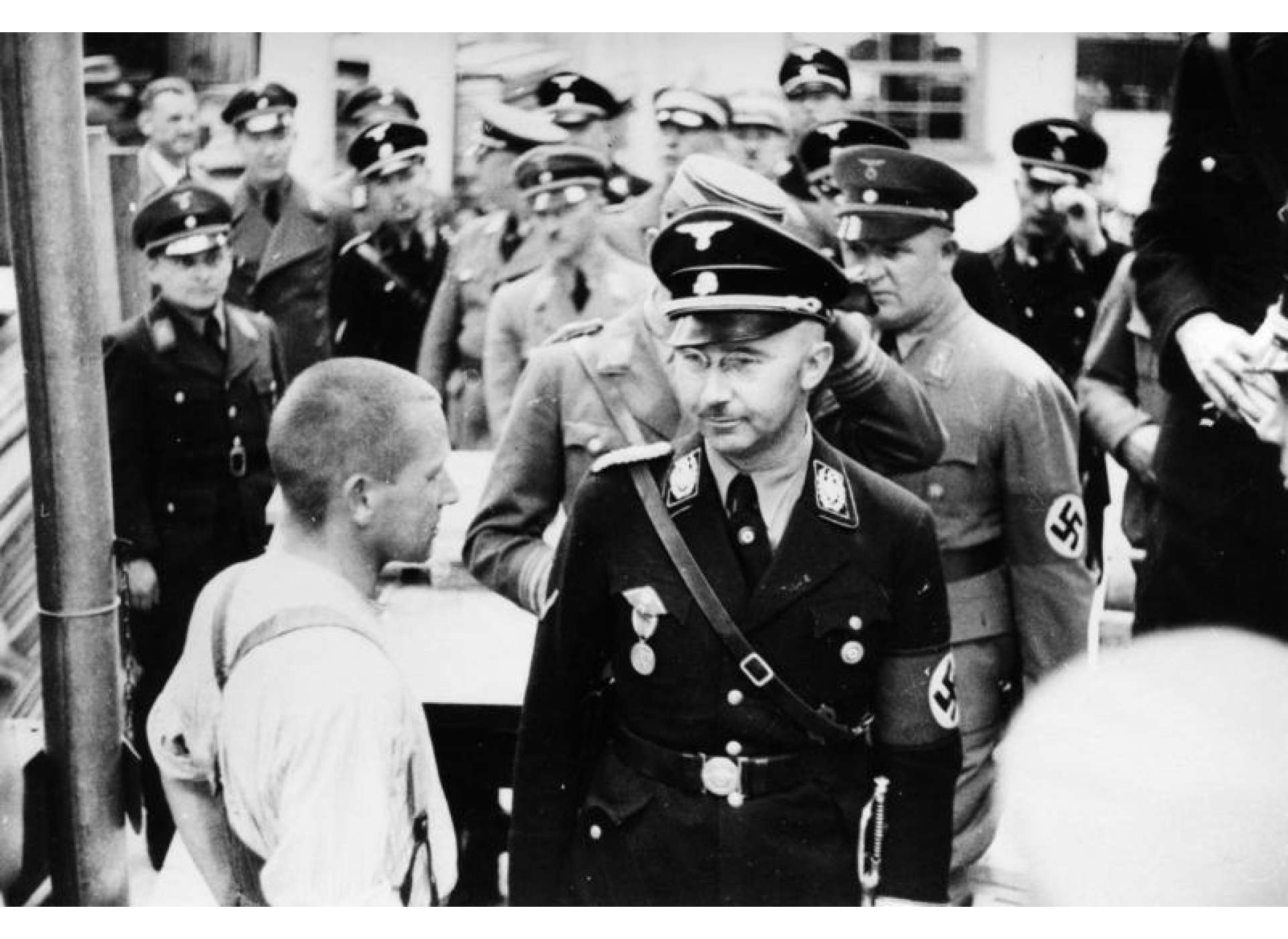
Heinrich Himmler, Head of the SS, inspecting the Dachau concentration camp in May 1936. Credit: Bundesarchiv Bild 152-11-12, Dachau, Konzentrationslager, Besuch Himmlers. Courtesy of Wikimedia Commons.
Himmler and Eicke could rely on Hitler’s backing to keep Dachau in operation while other camps in the Berlin area, such as Oranienburg and Columbia House closed. In fact, in 1936-37, Himmler, once he consolidated control over all police forces in Germany, spearheaded a drive to increase the number of inmates by rounding up tens of thousands of Germans. Many of them were not pursued for their politics or race but for criminal acts or as “asocials” or “work-shy” individuals (the latter terms covered vagrancy, panhandling, and drug and alcohol addiction). SS and police forces confined them in Dachau, which, in turn, provided a blueprint for the new concentration camps erected at Sachsenhausen (1936), near Berlin, and Buchenwald (1937), near Weimar. Roma, gay men, and Jehovah’s Witnesses would soon become targets during this phase of expansion in the late 1930s.
As its numbers increased, Dachau physically expanded as well in 1937-38. Funding came directly out of the national budget. More than 30 wooden barracks were built, with one set aside just for anti-Nazi clergy. Due to the renovations, Hans Loritz, the sadistic camp commandant from 1936 to 1939, had recourse to a large square for roll-call. Up to 6,000 men could now be incarcerated at Dachau. The layout of the camp changed very little afterwards. As the oldest and best-known Konzentrationslager, the Nazis readily granted tours of the camp to government functionaries, teachers, and students. They reveled in their persecution of opponents as an unavoidable step for forging a new, racially and politically purified Volksgemeinschaft (national community).
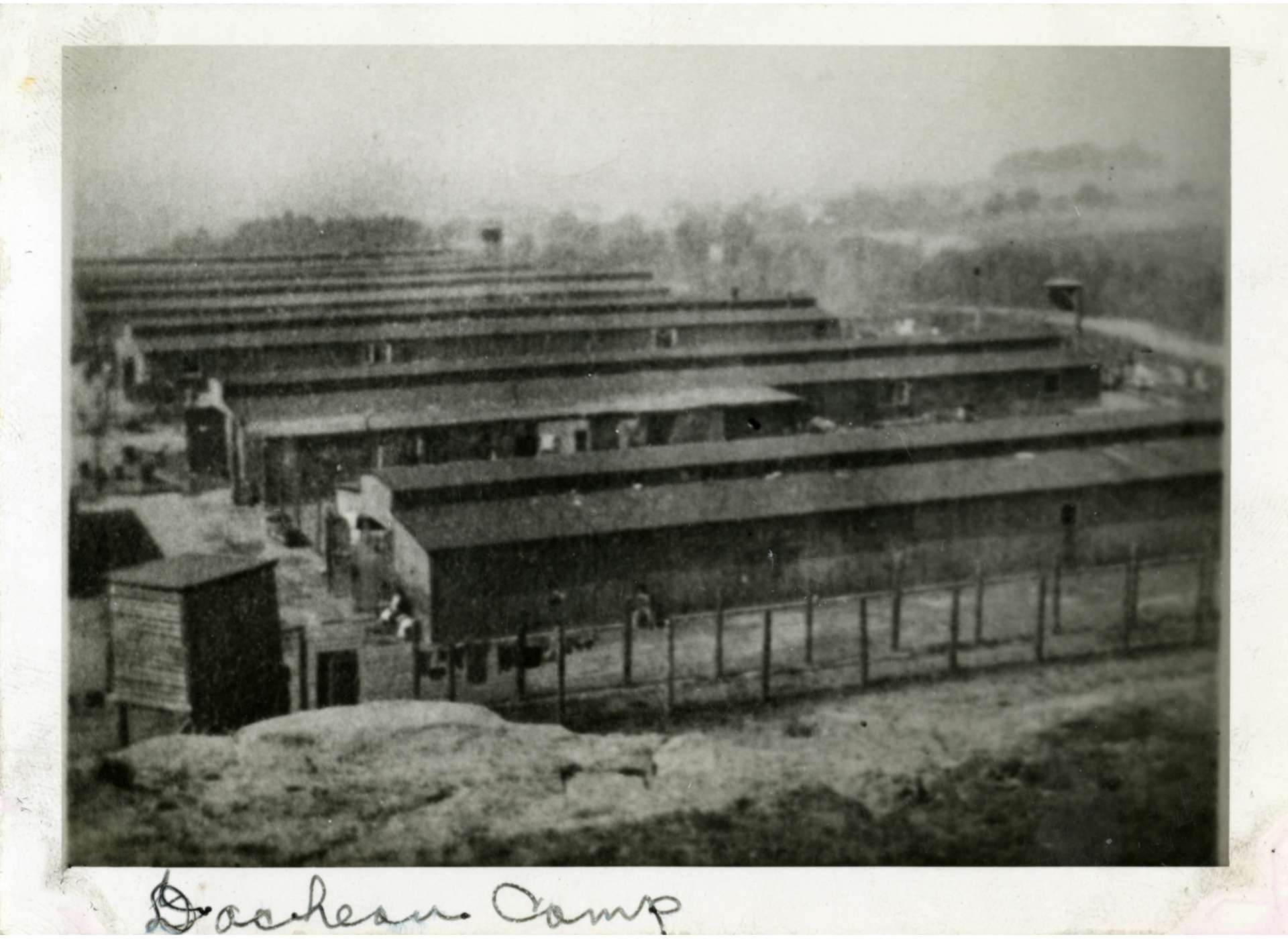
Barracks of the concentration camp at Dachau, 1945. Gift of Vincent Yannetti, from the Collection of The National WWII Museum, 2008.321.230.
Kristallnacht (Night of Broken Glass) in November 1938, prefigured an even worse future for Dachau’s inmates. In the wake of the pogroms across Germany, the Nazi regime incarcerated more than 11,000 Jews in the camp. Most of them, however, did not stay there long. In 1939, with some exceptions, they were released—with the expectation they would soon leave Germany for good. Still, this huge and rapid, if temporary, influx pointed ahead to what would take place in Dachau during World War II.
As Hitler readied Germany for war in the summer of 1939, Dachau was a fixture of a giant and abominable system of concentration camps spread throughout the entire country. Flossenbürg in northeastern Bavaria, Neuengamme, close to Hamburg, and Mauthausen, near Linz in annexed Austria, had all been established in 1938. Ravensbrück, a camp exclusively for women north of Berlin, was created the following year. After September 1939, life and death in Dachau transformed horrifically due to the Nazi dictatorship’s continent-wide war of conquest, subjugation, and extermination. Dachau in wartime is the subject of my next article.
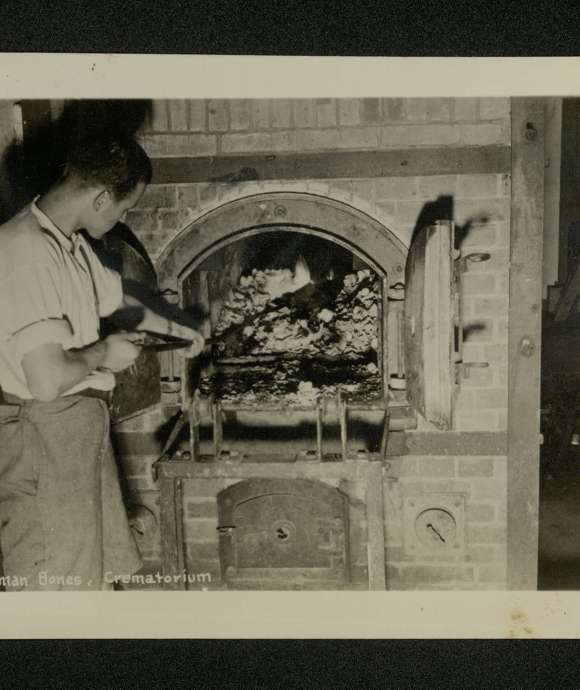
Part 2: A Shocking Level of Brutality and Degradation: Dachau in Wartime
Wartime reshaped life and death in the Dachau concentration camp in fundamental ways.
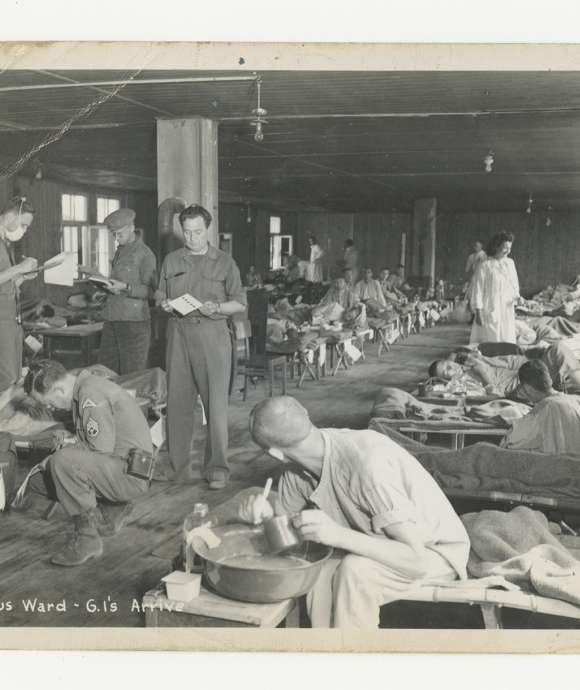
Part 3: The Last Days of the Dachau Concentration Camp
For the last several days of its existence, before soldiers of the United States Seventh Army arrived, Dachau was a small, self-enclosed universe of decay and death.
Jason Dawsey, PhD
Jason Dawsey, PhD, is ASU WWII Studies Consultant in the Jenny Craig Institute for the Study of War and Democracy.
Cite this article:
MLA Citation:
APA Citation:
Chicago Style Citation:
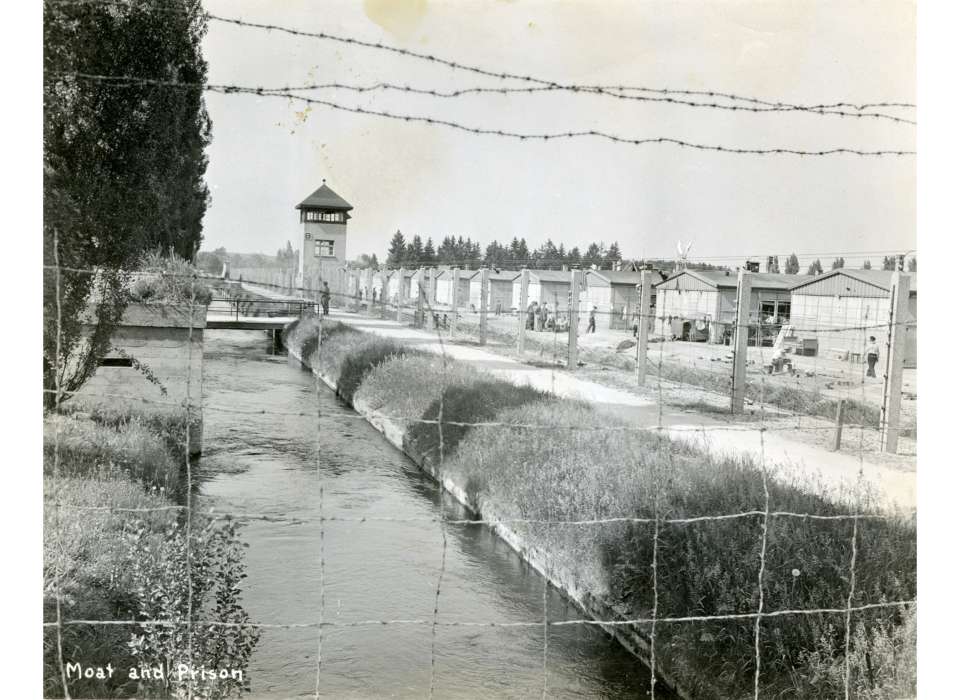

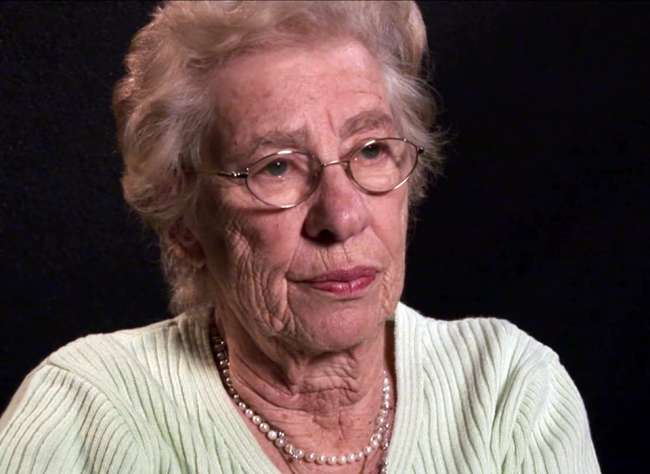



![Max Fuchs, New York City cantor, sings as Rabbi Sydney [sic] Lefkowitz, Richmond, VA, conducts the first Jewish services from Germany.](/sites/default/files/styles/max_650x650/public/2025-10/image1.jpg)


